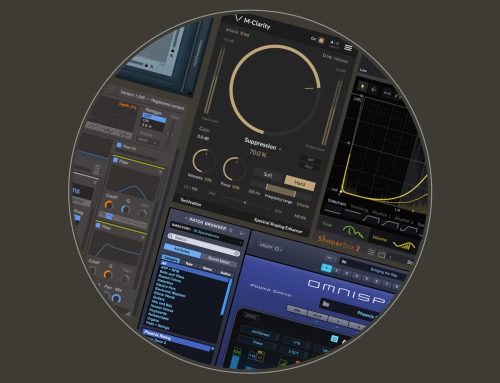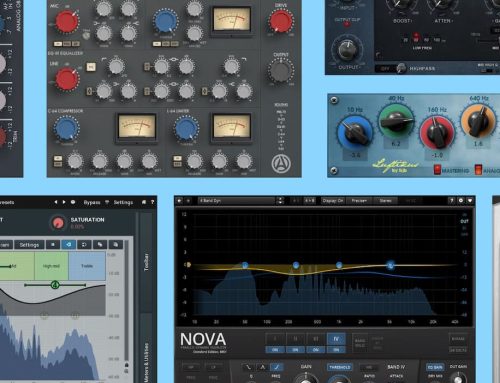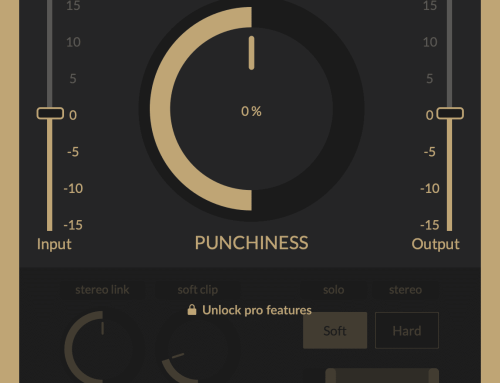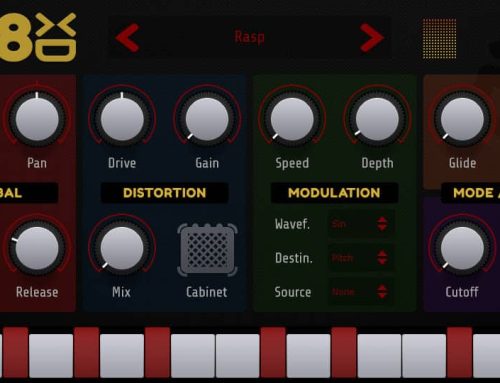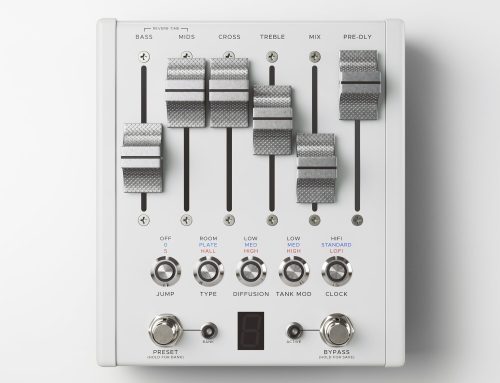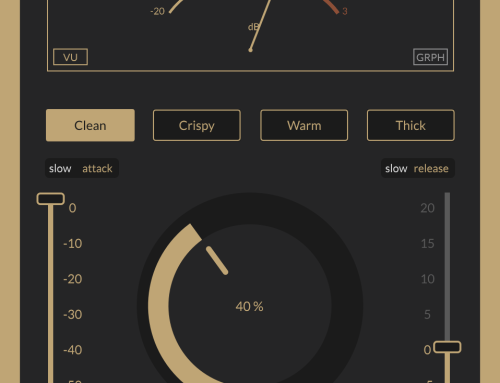Antelope Audio has recently updated its “Discrete” line of interfaces. Introducing 2 versions with 4 and 8 mic pres called Discrete Synergy Core. Having used the previous generation Discrete interfaces I am excited about this new upgrade Discrete 4 Synergy Core.
The previous-gen had exceptional specs for its price range. But in my personal opinion, the software experience wasn’t as pleasing as promised by the company. That all seems to be left in the past as the latest generation of Discrete Synergy Core interfaces has addressed all previous issues. Currently, I have the smallest of the 2 units – The Discrete 4 Synergy Core, so I took the chance to write this review.
DESIGN DISCRETE 4 SYNERGY CORE

The old gen Discretes had a solid build and already looked appetizing. However, now the company has taken the design a step further with an overall slicker and shinier look.
As soon as I opened up the cheap-looking recycled-paper box – I was greeted by a device that definitely felt like a premium piece of gear. The changes to the design don’t appear to be major. Although, they are definitely what the device needed for that premium feel.
MOBILITY
In my personal opinion the best-selling point of this interface its footprint and mobility. The compact shape is literally as big as a normal size book. It almost prompts you to through it in a backpack. I don’t actually need this interface as I’m using a 32-channel desk hooked up to an Antelope Audio Orion 32+ Gen3. But, I can see how having the new D4 can come in use precisely because of its mobility!
For example: in an upcoming session I need to record a 4-5 piece choir in a church. Normally I would need the Orion plus at least 4 outboard mic preamps on location for it. In this case, though, I could just throw the D4 in a backpack together with a MacBook and I’ll be sorted.
SOFTWARE FEATURES
Not only will I have 4 awesome mic-pres to play with, but I could make use of the AFX plugins and control the sound coming into my DAW with some processing. The pain in doing sessions on location is that if you want anything spicier than just mic amplification you need to bring heavy bulky outboard compressors and EQs. Here is where the super-low latency plugins come into play. They sound good for tracking. They are hosted on the internal DSP-FPGA system of the D4 so lower buffer sizes are an easy task for the laptops’ CPU.
The cherry of the cake is the 4 headphone outputs on the front of the device. I couldn’t figure out why in God’s name would Antelope include such an abundance of HP outs in a device that small. I had to hold the interface in my hands to get it…
A choir of 4 people requires 4 individual monitor mixes. The 4 HP outs on the D4 would save me the hassle of bringing a dedicated monitor station.
THE SMARTEST MOVE
To circle back on the “Mobility” factor of this device I want to highlight all the clues Antelope gave us to suggest they really don’t want us to stack those D4s in 19” dusty racks. The device has no rack mounting system or 19’’ plate expansion capabilities; it has a stupid amount of HP outs; and to top it all up it features a beautiful black Antelope logo on the top shell, which clearly shouldn’t be hidden in a rack.
I fully believe the mobile aspect of this device is the smartest thing the company has done for the interface. That allows Antelope to stretch the target audience to not only bedroom producers/ singer-songwriters, but also the pro-level engineers and other professionals who need quick solutions for sessions on the road.
DISCRETE 4 PERFORMANCE

I find no pleasure in giving you all the boring numbers and specs, so I urge you to visit their website and find out all the rest for yourself.
What I would mention though is that the mic pres are made with Class A discrete console-grade components, and they are more than capable. They may not have the UAD technology that allows you to apply plugin emulations directly on the analog signal, but I don’t see much relevance as the stupidly-low latency of the FPGA and 121dB dynamic range on the converters seem to make up for it. In addition, those amps are capable of powering Antelopes’ modeling mics, which opens a whole new ocean of sound-sculpting capabilities for the device.
DYNAMIC RANGE OF DISCRETE 4 SYNERGY CORE
I do believe Antelope, could’ve done a bit better on the dynamic range of the D4 converters. Some of their high-end devices feature 128-131 dB of dynamic range. Though, that is not to say the D4 conversion is any less superior to the conversion in other competitive devices.
Many high-end Antelope interfaces feature mastering-grade monitor outputs. They are nowhere to be found on the D4 Synergy Core. Its monitor outputs have the same converters as the ones found on its line outputs.
That being said the mastering grade outputs like the ones in the Orion series would’ve compromised the affordability of the D4 Synergy Core. They tried to squeeze the most out of this device. Plus they make sure you get premium components on all the important places. Why else would they package the D4s in those cheap recycled boxes if not to save you some money?
SYNERGY
If you’ve been on Antelopes’ website by now you have probably been confused by all the acronyms. So I’m going to try to simplify what makes that interface so Synergy.

Traditional external CPUs in interfaces are called DSP (Digital Signal Processor). Chips like the ones UA introduced in 2012. Antelope came up with a different technology called FPGA (Field Programmable Gate Array). From what I understand the FPGA chips distribute processing power more efficiently and don’t need an obscene amount of cores, but are only useful for Antelope-made plugins.
The previous generation Discrete 4 interfaces featured a single FPGA chip. Now the new Synergy line combines that with 2 DSP chips. That makes the tiny Synergy interface into a powerhouse with 4 times the processing capabilities of the old Discrete 4 capable to run third-party plugins.
AUTO-TUNE

Antelopes’ latest scream is the release of Auto-Tune and it’s incorporation in the Discrete hardware-software ecosystem. The near 0 latency and vast DSP capabilities of the D4 enable live tracking through Auto-Tune.
That software has become an industry standard for tuning vocals both for pitch correction and for FX. It would seem that almost simultaneously both Antelope Audio and Universal Audio unleashed Auto-Tune capabilities over their interfaces but Antelope offers their Auto-Tune at a slightly lower price.
The release of that piece of software and its’ smart integration with the Synergy Core interfaces is significant for all songwriters, producers, and engineers using that interface. Live tracking through Auto-Tune can provide a whole different level of control over the end result.
HOT DEALS
The release of Auto-Tune and the Synergy line of interfaces is still fresh out of the oven! Antelope is offering a huge deal for new and existing customers that would probably extend until the end of the year.
With every Synergy interface, they give away a free copy of Auto-Tune and a vocal FX bundle. That all comes to 600 EUR worth of software that ships even with the smallest and cheapest Synergy interface – the Discrete 4.
CONCLUSION
In my opinion, the Discrete 4 Synergy Core packs a perfect balance of tools for mobile recordings at the most efficient price point.
Antelope hasn’t made any compromises on the things that really matter and the premium factor is definitely there. The interface is solid, well-built, sounding good and has plenty of expansion options that just add to its versatility.
The 36 plugins it comes with are more than any other company would offer. They are enough to get you started. If you ever want to dive deeper into Antelope software you’ll be greeted with very reasonable prices on the rest of their plugins.
If we take into account the current deal of the free vocal FX chain and Auto-Tune this interface becomes a no-brainer for anybody who can afford to spend 999 EUR.

Written By Ivo Sotirov


